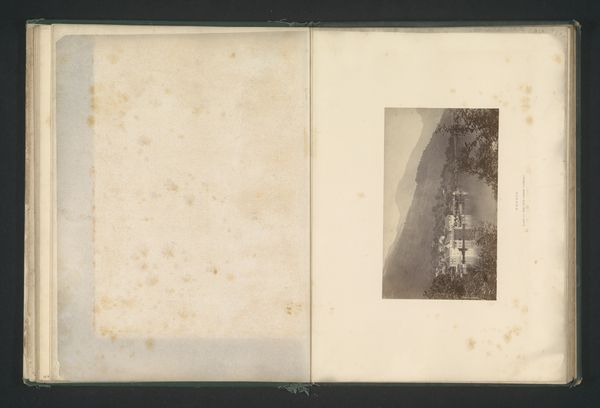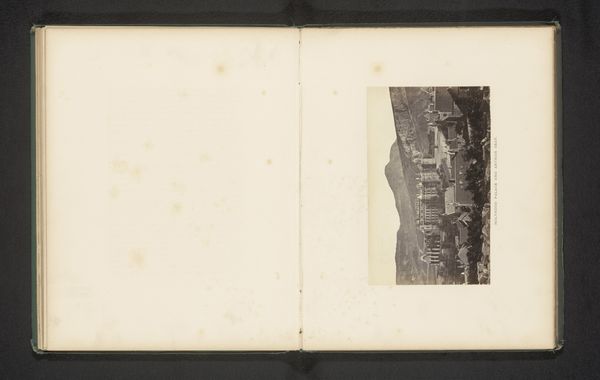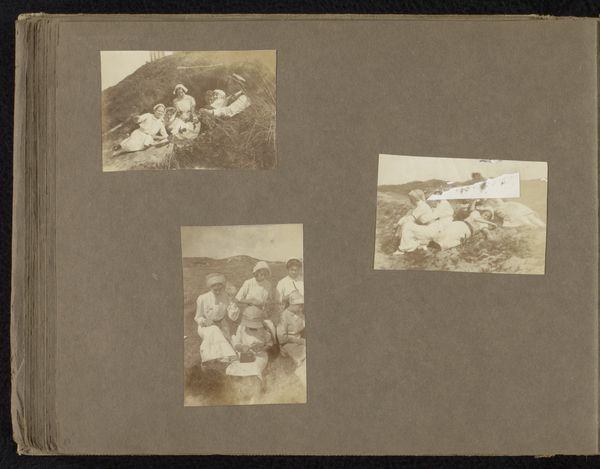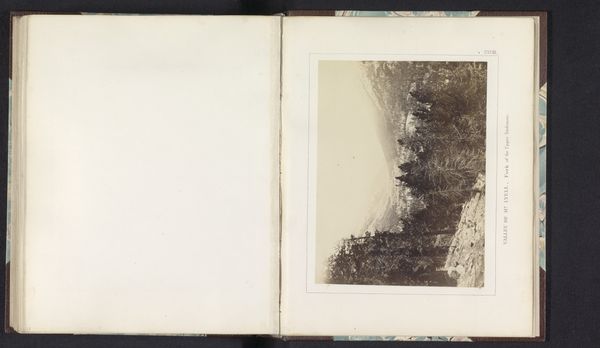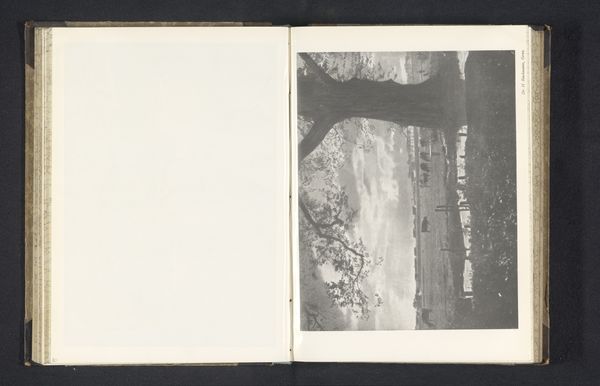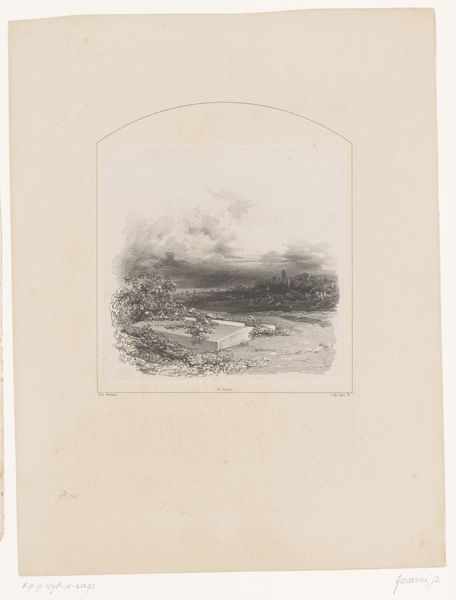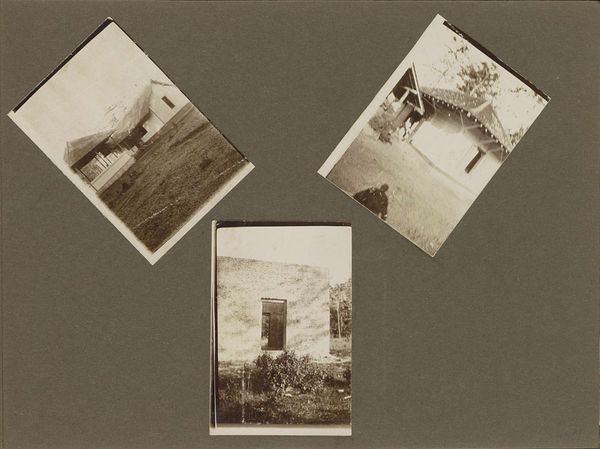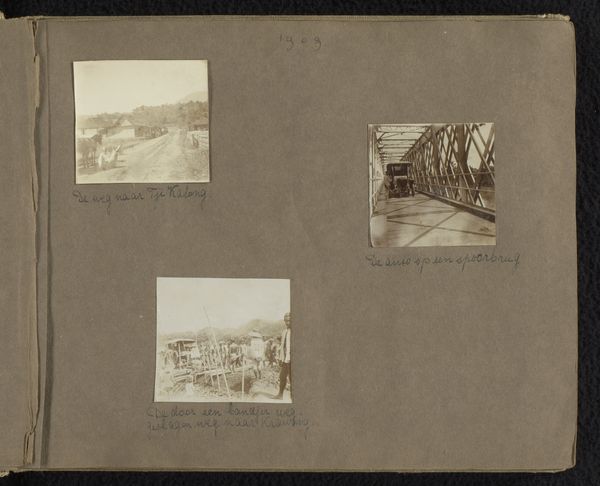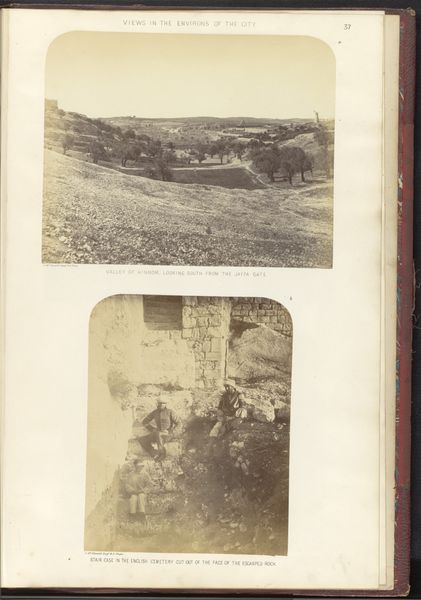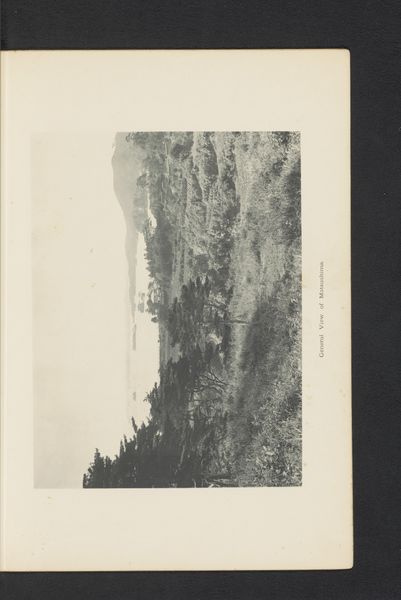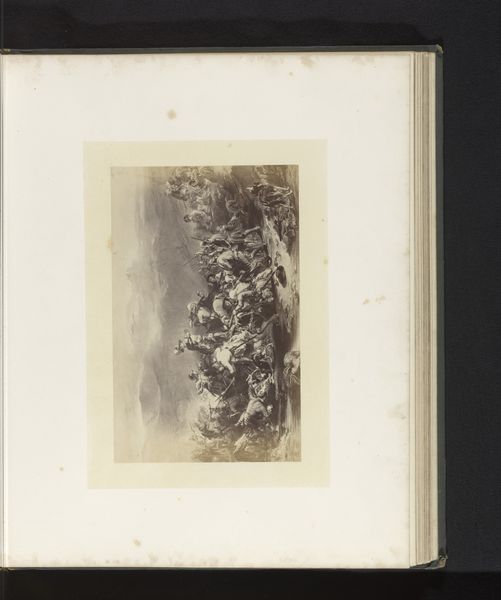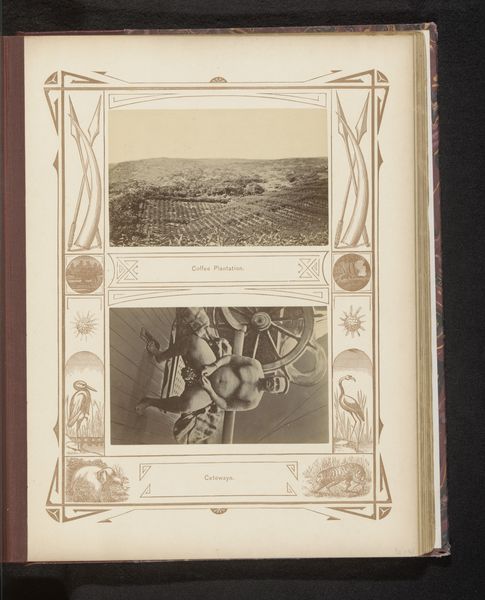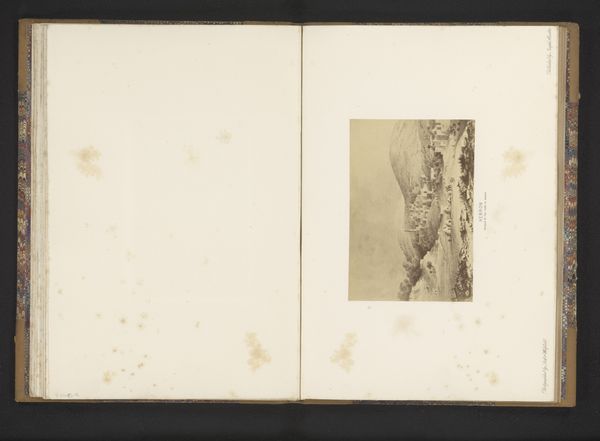
Dimensions: height 124 mm, width 180 mm
Copyright: Rijks Museum: Open Domain
Editor: Here we have "Gezicht op het dorp Bludenz," a cityscape from roughly 1860 to 1890 by O. von Zabuesnig, rendered in albumen print photography. It’s framed in pressed flowers, which is interesting. Looking at the composition itself, with the tiered effect, how do you interpret this work based on what you see? Curator: The structure is particularly compelling. Note how the arrangement presents a clear visual hierarchy. Each photograph, despite varying in scale and focus, adheres to an internal logic, bound by spatial relationships that direct the gaze vertically. The albumen prints also lend a warmth that unifies the disparate landscapes. Editor: So the composition, framing, and even the print process contribute to the reading of the images, giving equal weight to the subject and method? Curator: Precisely. Let's consider the tonal gradations achieved by the albumen process; note how each photograph displays a subtly varied palette. How might we correlate these gradations with formal ideas about representation? Editor: So, each view contributes differently to the whole? It seems the artist sought to catalog distinct viewpoints and, through that choice, control our perception. It really highlights the artificial nature of image creation, even in photography. Curator: Indeed, the albumen process, requiring skilled manipulation of chemicals and light, subtly yet undeniably mediates our vision. This artifice draws attention to the choices embedded in capturing any view. Editor: It's fascinating how closely attending to the medium allows us to uncover the artist's decision-making. Thanks for clarifying how those formal elements impact its interpretation. Curator: It's in these formal arrangements and processes we truly glean the art, not necessarily in the representational value. Thank you for sharing your astute perspective.
Comments
No comments
Be the first to comment and join the conversation on the ultimate creative platform.
